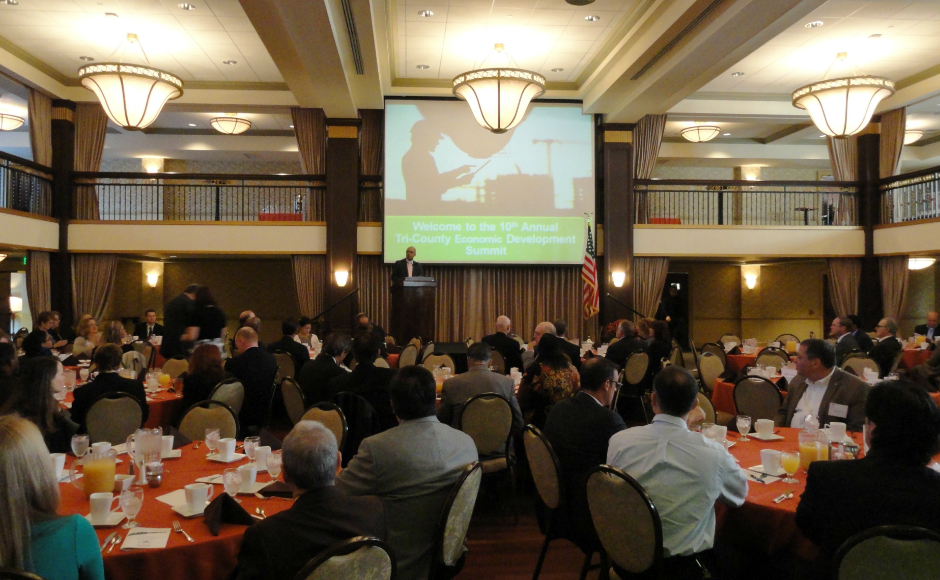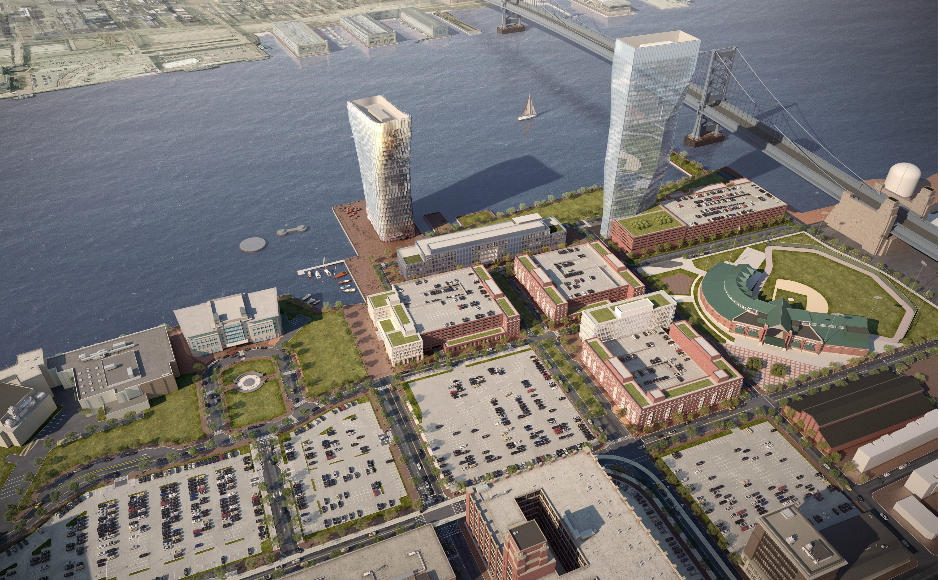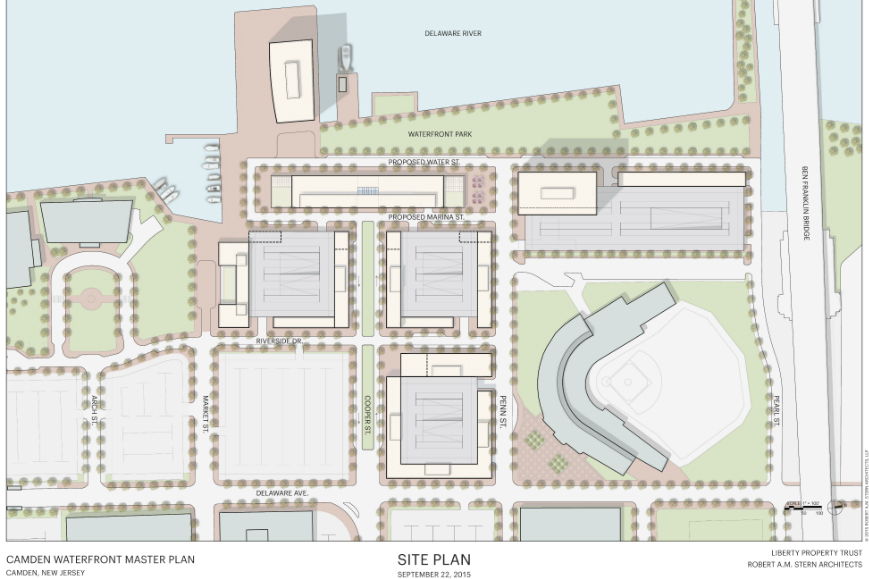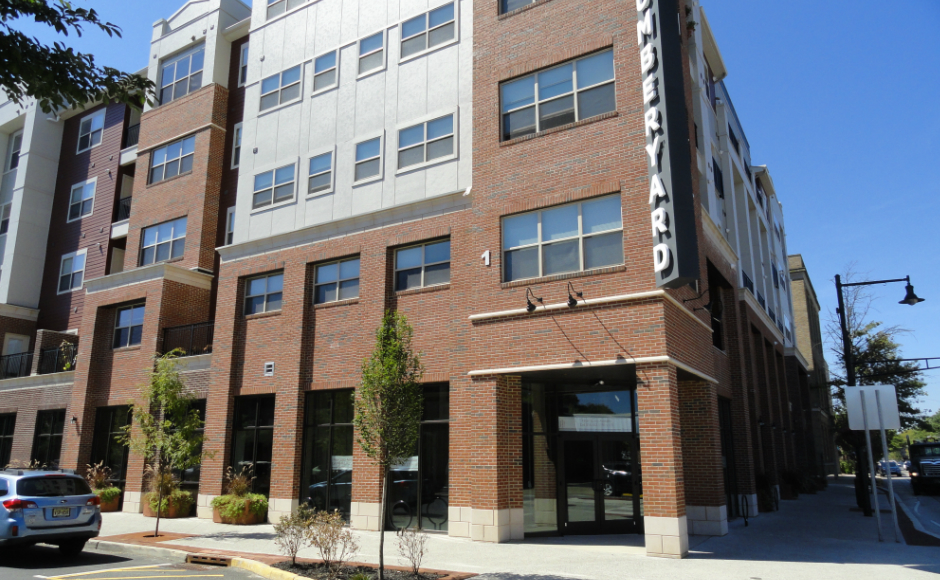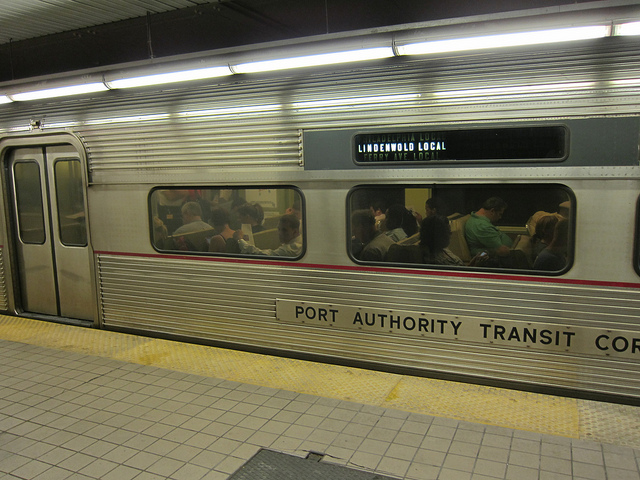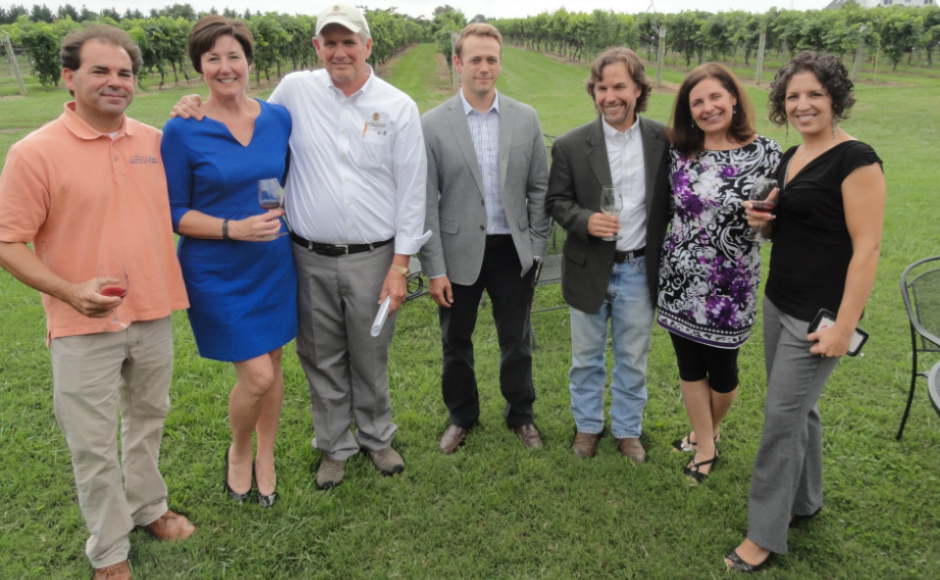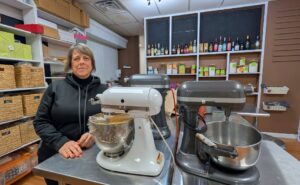Building a strong business corridor in South Jersey involves connecting workers with transit, activating dormant industrial sites, and tri-county governmental cooperation.
By Matt Skoufalos
The industrial real estate market in America is booming, said William Hankowsky of Liberty Property Trust, not because of manufacturing interests, but because of Amazon.com.
“We sit on our computer at home, push a little button in a shopping cart, and expect something to arrive in a day or two,” Hankowsky said.
“[E-commerce] is growing, and it needs warehouses to make that happen.”
Several organizations were acknowledged for their contributions to the economic health of the region at the 10th annual Tri-County Economic Development Summit in Collingswood on Friday. Yet even in a breakfast crowd of entrepreneurs, economic development officials, and other dignitaries, Hankowsky’s billion-dollar plan for 16 acres of Camden City waterfront property is still the biggest news in three counties.
“I think it might really be the tipping point, where you think about Camden the way you think about Hoboken [and] Jersey City,” he said: “[as] a cool place across from the big city.”
The attractiveness of redevelopment in Camden City is driven by Grow NJ tax incentives as well as the by-now-familiar outgrowth of its “eds-and-meds” professional sector, Hankowsky said, but the waterfront project was most appealing to him because its 16-acre parcel was available “at scale.”
With so much real estate on the table at once, Liberty Property Trust has drawn up plans for 1.5-million square-feet of office space, 325 residential units, and 5,000 parking spaces in structured garages–volume equivalent to the Comcast Tower the company is building across the river in Philadelphia.
Architect Robert A.M. Stern is overseeing the contemporary look of both projects, which Hankowsky said will be a factor in attracting tenants.
“The classic, vanilla building is going to really struggle to compete to keep customers in the commercial office market,” Hankowsky said.
White-collar millennials are seeking contemporary workplaces that satisfy them structurally as well as environmentally: buildings that feature open spaces, high ceilings, and LEED certification, but which also offer a sense of place.
“Workers today want to work in a very exciting environment,” Hankowsky said. “People like urban environments, excitement, lots of people together doing lots of things.”
Smart growth design principles don’t only play a part in planning for dense, urban areas like the Camden waterfront, Hankowsky told NJ Pen. The suburban communities surrounding the city also were built to drive foot traffic to “a little retail core,” he said. Successfully redeveloping them requires that communities pay attention to national planning trends, which include “mixed use, density, [and] creating a place you want to be that you find interesting.
“Safety, schools, and good retail corridors: that’s what people find interesting today,” Hankowsky said.
As such values continue to govern broader redevelopment plans county-wide, the question of mixed-use transit villages along the PATCO Hi-Speedline is one the government “would definitely” like to revisit, said Camden County Freeholder-Director Louis Cappelli, Jr.
“I think in due time, a project like that would happen,” Cappelli, Jr. said. “What I think would take for that to happen is some additional legislative incentives.”
Redevelopment activity in Camden County is humming, from a new Eggo waffle plant coming to Winslow to the Gloucester Premium Outlets in Blackwood to the overhaul of the 35-acre W.T. Grant Shopping Center in Clementon, Cappelli, Jr. said. Nearby, Pennsauken “quietly creates thousands of new jobs on a yearly basis,” and real estate interest in Camden City is starting to move off the waterfront and into North Camden, he said.
“There’s still some opportunities in Camden, but a lot of the land is spoken for,” Cappelli, Jr. said.
The county government is also searching for a new tenant to take over Campbell’s Field from the departing River Sharks franchise, but sourcing the ideal replacement candidate may involve brokering a complicated minor-league affiliate deal with the Philadelphia Phillies.
Agribusiness and accessibility
The growth of seven rural wineries in Gloucester County have made it the top destination in the state for tourism, said Gloucester County Freeholder Heather Simmons.
Although the sprawling countryside supports the booming local viticultural business, it can make it harder for workers who reside in the county to get to those 5,700 related jobs. Residents have had mass-transit access to plenty of destinations along north-south routes, but none heading east to west in the county, Simmons said.
Earlier this year, however, the Pascale Sykes Foundation committed $1.2 million to help operate a dollar-per-ride shuttle connecting the Avandale Park and Ride in Winslow Township to the Pureland Industrial complex in Bridgeport. Since June, the route has helped families inexpensively access doctors, schools, and shopping throughout the county as well as NJ Transit connections along the way.
“The number of jobs that are along that route within Pureland Industrial Park itself are tremendous,” said Cari Burke of the Glassboro Family Success Center, which was acknowledged at the summit for hosting 900 job-seekers at a service fair it held along the Pureland shuttle route.
Transit access is still a key component of business in Burlington County, which also continues to benefit from its geography and traditional presence in the transportation and logistics industries, said Mark Remsa, Director of the Department of Economic Development and Regional Planning for the Burlington County Bridge Commission.
Although wholesale trade, transportation, and warehousing are “rising in terms of employment and importance in local economy,” Remsa said the healthcare sector is now the top employer in Burlington County, followed by retail, professional/technical/scientific services, and manufacturing.
Unemployment in Burlington County is down from pre-recession levels, and has hit sub-6-percent figures in the last eight months, Remsa said. The county also boasts an educated workforce, with 92 percent of residents having earned at least a bachelor’s degree.


